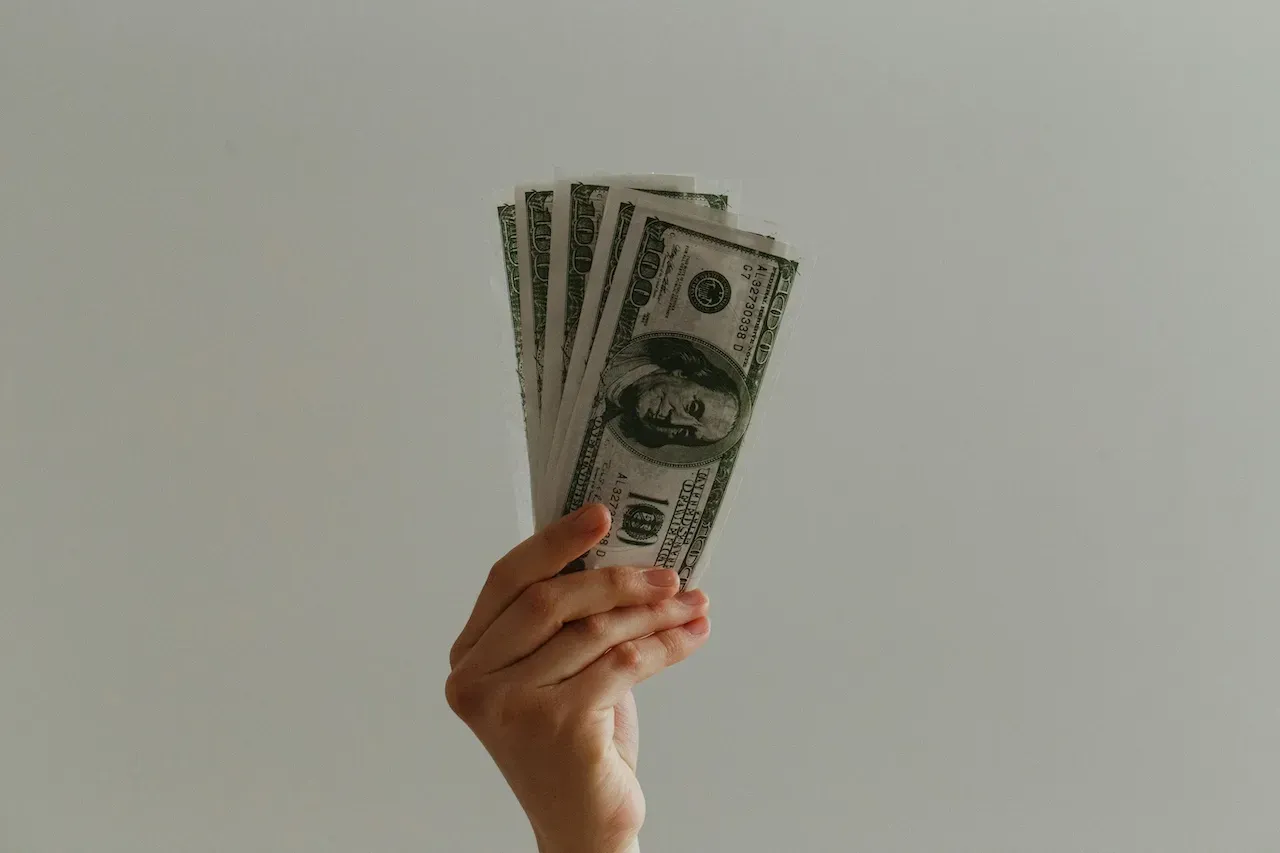Paying off student loans can be overwhelming and so much tougher than they initially seem. If you are currently paying off debt or are even remotely thinking of potentially taking out student loans – you are probably curious who qualifies for public service loan forgiveness?
Is it worth taking out students loans in the off chance that you can benefit from this program in the future? Having your loans forgiven can almost sound too good to be true, but there are many individuals who have taken advantage of this tremendous opportunity.
For individuals who work in public service, there is a real opportunity to get relief through the Public Service Loan Forgiveness (PSLF) program. By the end of this article, you will be able to explore the ins and outs of PSLF, find out who qualifies for it, and how to apply. You might even find this helpful when paying off your own student loans.
Do you want to avoid falling into enormous amounts of debt? Be proactive and create an account on Bold.org to begin applying for scholarships today.

Understanding Public Service Loan Forgiveness
What Is the Public Service Loan Forgiveness Program?
Public Service Loan Forgiveness is a federal program created to help qualifying borrowers forgive the remaining balance on their Direct Loans. Typically, those who have completed at least 120 qualifying payments while simultaneously working full-time for a certified employer.
The program was formed in 2007 to motivate individuals to pursue careers in public service sectors, including government agencies and nonprofit organizations, as well as a handful of teaching jobs.
Eligibility Criteria for Public Service Loan Forgiveness
Employment Requirements
In order to meet the requirements for the Public Service Loan Forgiveness program, you must be employed by a qualifying employer. This includes government organizations at any level (federal, state, local, or tribal), tax-exempt nonprofit organizations, and other specific types of nonprofits that are included within this range of public services. Given that the focus of this program is public service, the nature of your work determines eligibility rather than the specific job title.
The industry spans a variety of roles, from teachers in low-income schools to nurses in public hospitals, and even public defenders or law enforcement officers. Whether it be through healthcare, safety, or other essential services, the role must have an impact on public service. This broad definition is great to give more autonomy for professionals to potentially qualify for loan forgiveness under the program.
Get Matched to Thousands of Scholarships
Create your Bold.org profile to access thousands of exclusive
scholarships, available only on Bold.org.
Loan Type Specifications
You might find that even if you are working in a qualifying employment, not all student loans are eligible for Public Service Loan Forgiveness. Only Direct Loans, which are loans provided by the federal government, are eligible for this program.
Private loans, Federal Family Education Loan (FFEL) or Perkins Loan programs, are not eligible for this program. As an alternative, you may have the option able to consolidate these loans into a Direct Consolidation Loan, which is eligible for PSLF. This consolidation can simplify loan management and ensure that borrowers remain on track for loan forgiveness if they meet all other program requirements.
If you have the option, you should mostly rely on Direct Loans because they offer the most advantages. They provide access to income-driven repayment plans and other lenient options like PSLF. Prior to finalizing an option, I recommend that you consult with the loan provider to assess whether it will eventually qualify for PSLF.

Repayment Plan Conditions
Your monthly payments are also another critical aspect of your application as you must be enrolled in an eligible repayment plan. Income-driven repayment plans offer borrowers a sense of flexibility to personalize their student loan payments based on their income and family size, ensuring that loan payments remain manageable even in times of financial hardship.
Your qualifying payment may adjust according to your financial situation, providing a safety net for borrowers working in lower-paying public service roles. With an income-driven plan, you can avoid risking future loan forgiveness while also maintaining financial stability.
Specifically for income-driven repayment plans, this would be in the categories of either Income-Based Repayment (IBR), Pay As You Earn (PAYE), or Revised Pay As You Earn (REPAYE). All of these qualify for PSLF. Monthly payments under any other repayment plans may not fulfill the required 120 qualifying payments.
Why Is Public Service Loan Forgiveness So Important?
From all the different career paths students pursue after completing their higher education, the jobs that center around serving underrepresented communities are less popular.
Typically, these jobs pay less, making it harder for people to pay off their student loans. By allowing eligible borrowers to have their loans forgiven after ten years of service, this program eliminates some of the barriers preventing those from taking this career choice.
This financial liberty provides individuals to pursue these public service careers without worrying about the enormous amounts of crippling debt on their shoulders. Student loan repayments become much more manageable, ultimately enabling others to make positive impacts in their communities.

Steps to Apply for Public Service Loan Forgiveness
If you have federal direct loans and can potentially qualify for PSLF, here are some next steps for what you should look out for. Regardless of where you are in your journey, staying up to date on this information can prove to be empowering whenever you are ready.
Completing the Employment Certification Form
The first step to jumpstart the program is to complete the Employment Certification Form (ECF) and submit it to the Department of Education. This form serves as written proof of your employment and establishes your path toward loan forgiveness. As with most application deadlines, it is recommended that the ECF be done sooner rather than later to ensure that you have all of your information ahead of time.
Be mindful when filling out this application to ensure it is updated with the most accurate and detailed information about your employer, job title, and period of employment. This form will be a critical document in verifying your eligibility for the Public Service Loan Forgiveness program. To avoid any errors, make sure to double-check all the information before submission to avoid any delays in the processing of your application.
Submitting the Loan Forgiveness Application
Once you have met every single one of the eligibility requirements outlined above, it is time to submit your loan forgiveness application. This application will prompt you to provide further information about your employment, loan types, and repayment plans.
There are almost thousands of people applying to this program simultaneously, so avoid the risk of having your application overturned due to accidental mistakes. Take the time to review all the requirements and ensure that you have met each one. Being proactive to provide comprehensive and accurate documentation will expedite the review process and help you avoid any potential setbacks.

Common Misconceptions About Public Service Loan Forgiveness
Misunderstanding of Eligible Employment
The biggest miscommunication surrounding Public Service Loan Forgiveness is figuring out which jobs will put someone through the door for the program. Many believe that they must have a certain job title and put emphasis on having a respectable “role.” In reality, it is the nature of your employer and the type of work you perform that determines eligibility.
This employment isn’t even confined to government positions. Nonprofit organizations that are tax-exempt under Section 501(c)(3) of the Internal Revenue Code are also eligible. Even working for AmeriCorps or the Peace Corps can make you eligible for Public Service Loan Forgiveness. If you are still confused or unsure, I would consider asking your employer because I am sure they would be able to lead you toward the right answer.
Confusion About Loan Types
Another misconception is the belief that all types of student loans are eligible for forgiveness, as well as confusion over what direct loans signify. Direct Loans include Direct Subsidized Loans, Direct Unsubsidized Loans, Direct PLUS Loans, and Direct Consolidation Loans, which are the only eligible loans.
Direct loans are federal student loans provided by the government to students during their undergraduate or graduate degree. Direct loans offer benefits such as fixed interest rates, flexible repayment plans, and options for loan forgiveness or discharge under certain circumstances. They are a common source of financial aid for students pursuing higher education in the United States.
You must carefully review the type of loans you have and consider consolidation options if needed. Most often, a federal student loan is one outlined in your college’s yearly aid package. That will tell you how many, if any, federal student loans you have.

The Impact of Public Service Loan Forgiveness
Financial Benefits for Qualifying Individuals
If you are one of the lucky individuals who qualify and successfully navigate the requirements, Public Service Loan Forgiveness can be life-changing. It offers significant financial relief by eliminating the burden of remaining student loan debt, allowing borrowers to free up their income for other critical expenses, such as saving for retirement or providing for their families. Additionally, forgiveness under PSLF is not considered taxable income, providing further relief to borrowers.
Societal Implications of the Program
There is currently over 6 trillion student loan debt in the United States alone. With statistics like that, Public Service Loan Forgiveness has broader implications for society. Not only does it help bring this large digit down, it also opens opportunities for more people contribute to the betterment of communities and society at large. The increase in the number of people working in public service has a positive effect on healthcare, education, and government.
Public Service Loan Forgiveness offers a beacon of hope for individuals faced with the burdensome weight of student loan debt. By understanding the program’s requirements, you can determine if you qualify for this valuable opportunity to have your loans forgiven. If you meet the eligibility criteria, take the necessary steps and make full use of this program to lighten the load of student loan debt and fulfill your aspirations of working in public service.

Frequently Asked Questions About Loan Forgiveness
Is there a maximum that can be forgiven?
The government hasn’t set any limitations as to how much aid is forgiven. The PSLF simply forgives the remaining balance on your federal Direct Loans after you have made 120 qualifying monthly payments under a qualifying repayment plan while working full-time for a qualifying employer. Once these steps are completed they forgive the rest, regardless of how much you have.
Why do private loans not qualify for Public Student Loan Forgiveness?
Public Service Loan Forgiveness (PSLF) is specifically designed for federal student loans, such as Direct Loans. Private student loans, on the other hand, are issued by private lenders like banks or credit unions, and they are not backed by the federal government. Private lenders may offer their own loan forgiveness or repayment assistance programs, but these are entirely separate from federal programs like PSLF and have their own eligibility criteria and terms.
What happens if I have defaulted on direct loans?
If you have defaulted on your Direct Loans, you may not be eligible for Public Service Loan Forgiveness (PSLF) until you’ve taken steps to rehabilitate your loans and bring them out of default. There are several options to fix your direct loan to get you back on track. Just make sure to attend to them immediately to avoid missing out on this opportunity.
Have more questions regarding loans, college, or student financials? Read our Scholarship Blog to ensure you never miss out on critical information.
Source link
All Materials on this website/blog are only for Learning & Educational purposes. It is strictly recommended to buy the products from the original owner/publisher of these products. Our intention is not to infringe any copyright policy. If you are the copyright holder of any of the content uploaded on this site and don’t want it to be here. Instead of taking any other action, please contact us. Your complaint would be honored, and the highlighted content will be removed instantly.

